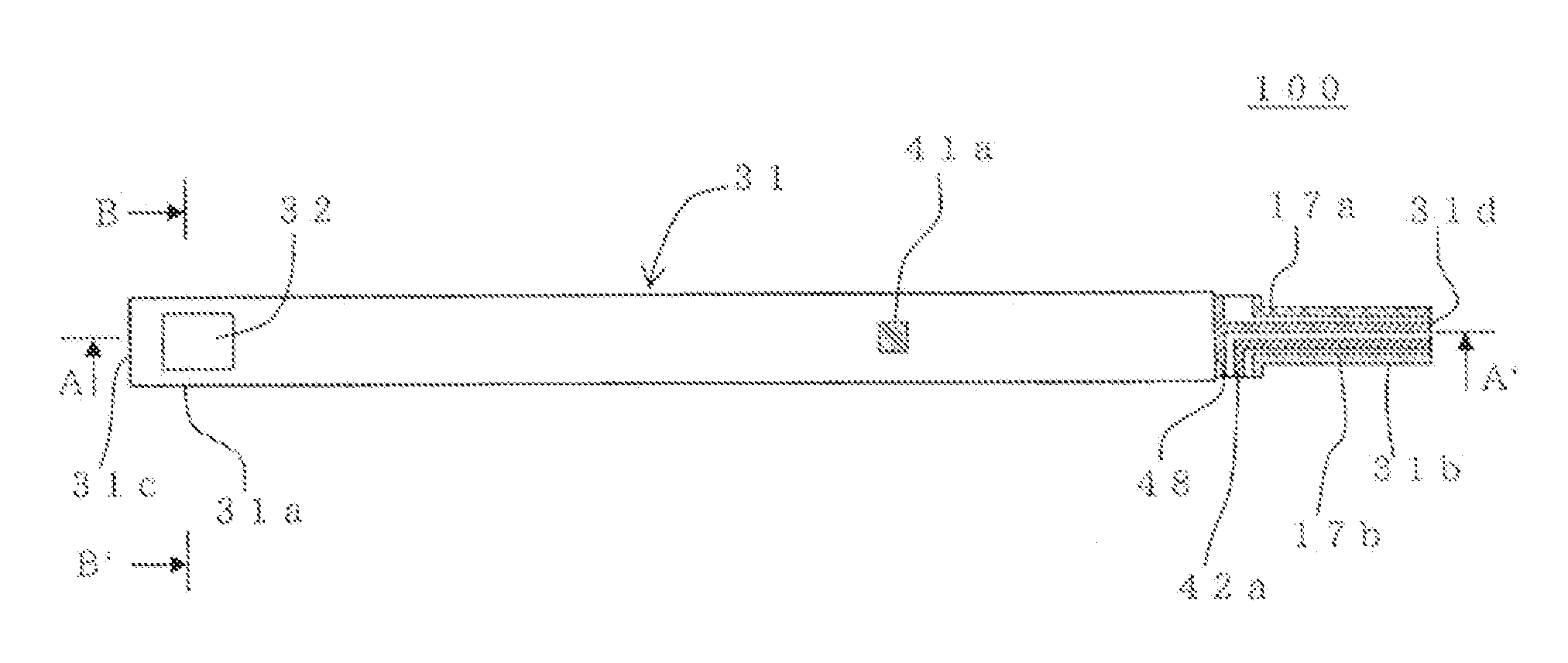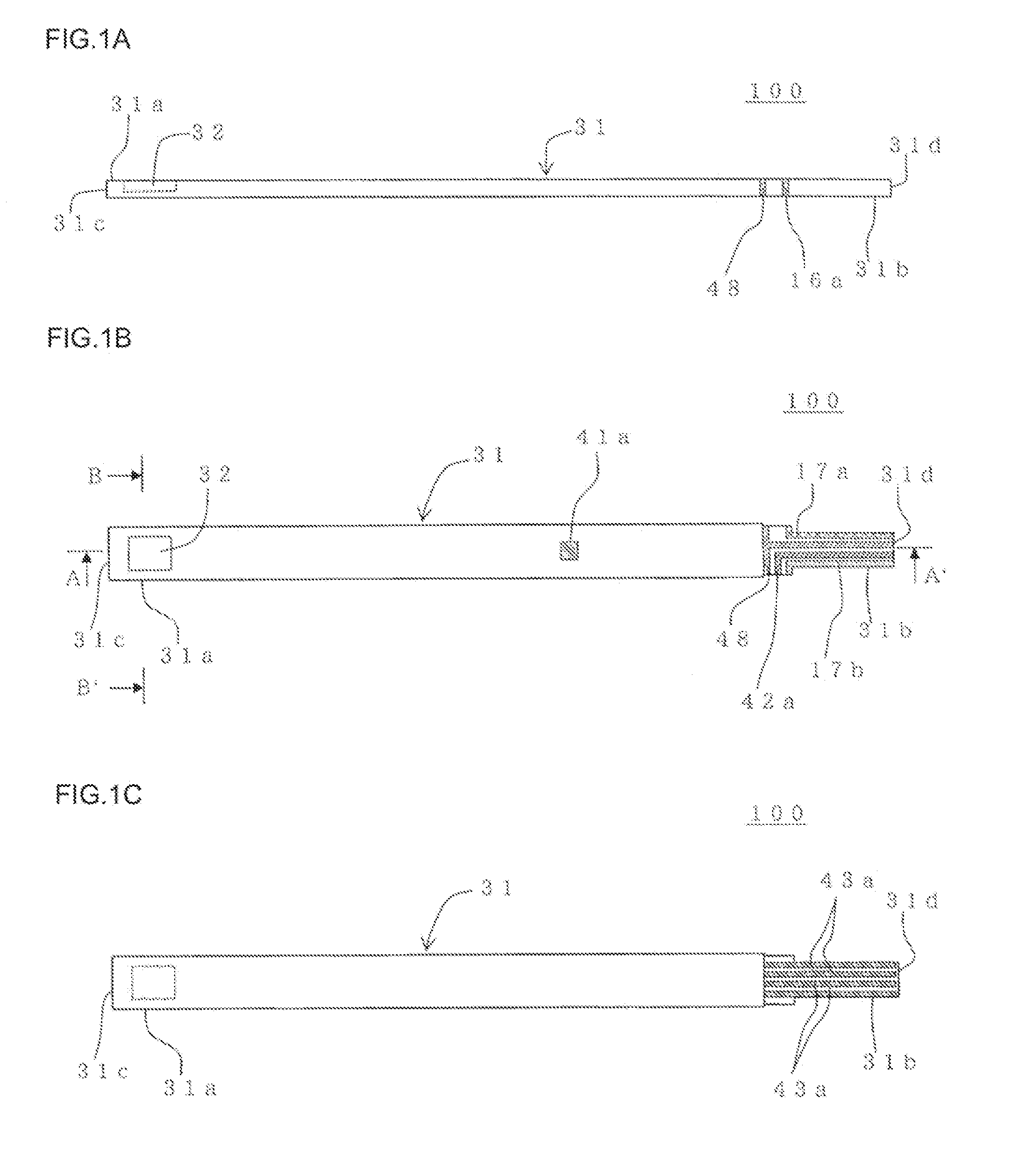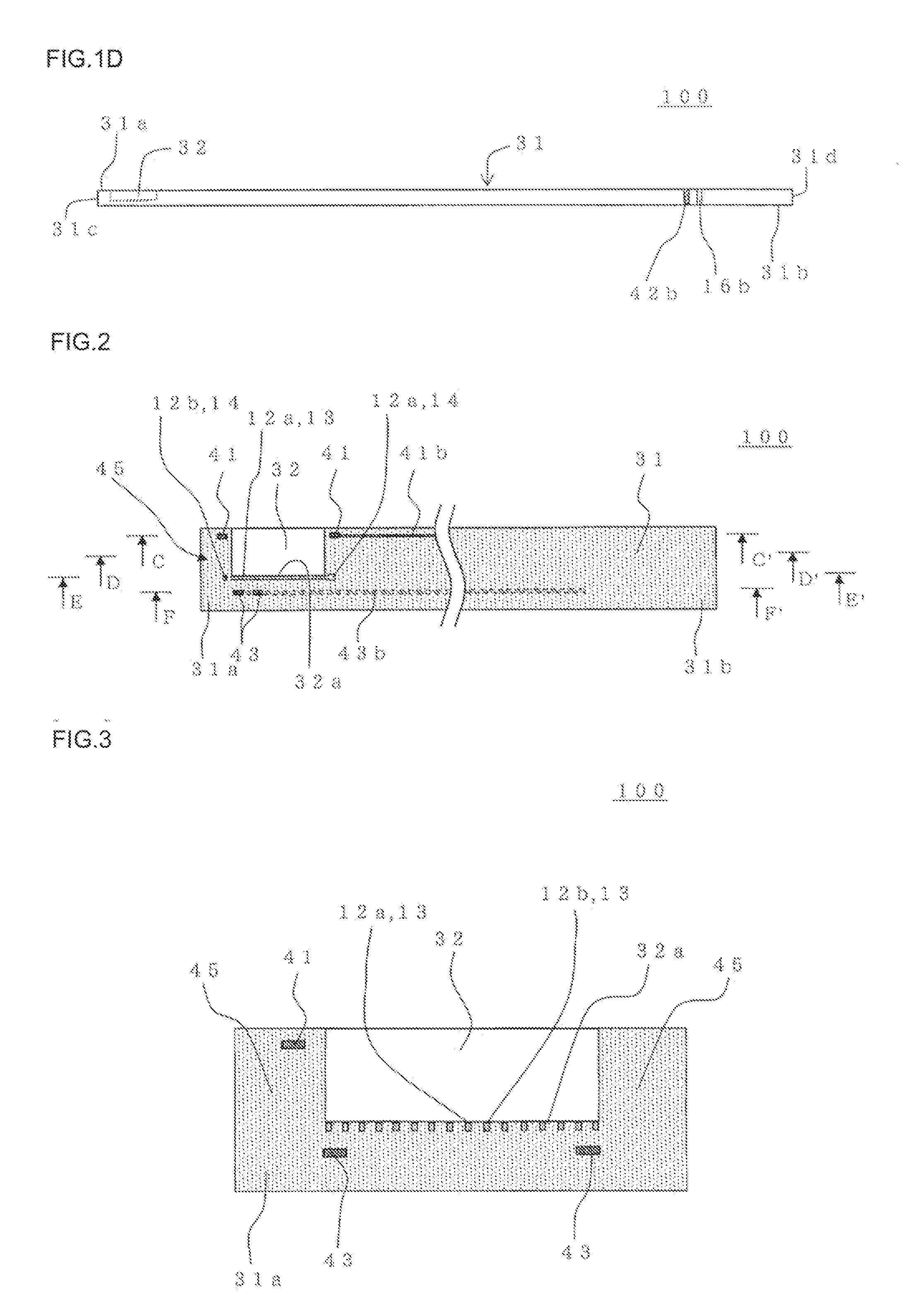Particulate matter detection device
a detection device and particle technology, applied in the direction of mechanical equipment, machines/engines, instruments, etc., can solve the problems of increasing manufacturing costs, easy distortion of the main body of the detection device, and further complicated device constitution
- Summary
- Abstract
- Description
- Claims
- Application Information
AI Technical Summary
Benefits of technology
Problems solved by technology
Method used
Image
Examples
example 1
[0148](Preparation of Forming Raw Material)
[0149]As a dielectric raw material, alumina was used, as a binder, polyvinyl butyral was used, as a plasticizer, di-2-ethyl hexyl phthalate was used, as a dispersant, sorbitan tri-oleate was used, and as a dispersion medium, an organic solvent (xylene:butanol=6:4 (mass ratio)) was used. These materials were placed into a pot made of alumina, and mixed, to prepare a slurried forming raw material for preparing a green sheet. Amounts of the raw materials for use were 7 parts by mass of the binder, 3.5 parts by mass of the plasticizer, 1.5 parts by mass of the dispersant and 100 parts by mass of the organic solvent with respect to 100 parts by mass of alumina.
[0150]Next, the obtained slurried forming raw material for preparing the green sheet was stirred and defoamed under a reduced pressure, and prepared so as to obtain a viscosity of 4 Pa·s. The viscosity of the slurry was measured with a B-type viscosity meter.
[0151](Forming Processing)
[0152...
example 2
[0161]In Example 2, a particulate matter detection device was manufactured in the same manner as in Example 1 except that a high-voltage dust collection electrode having a width of 400 μm was disposed closer to an inner periphery of a recess portion peripheral portion (i.e. a wall which formed a recess portion) (i.e. closer to a wall surface of the recess portion, specifically at a position with a distance from the wall surface of the recess portion which was 10 to 30% of a length from the wall surface of the recess portion to the outer peripheral surface of an element base material) at the position which was higher than measurement electrodes. FIG. 15 shows a state of an electric field in a case where a voltage of 2 kV was applied to the high-voltage dust collection electrode of Example 2. Here, FIG. 15 is an explanatory view schematically showing the state of the electric field generated by the high-voltage dust collection electrode in the particulate matter detection device of Ex...
example 3
[0162]In Example 3, a particulate matter detection device was manufactured in the same manner as in Example 1 except that a high-voltage dust collection electrode having a width of 400 μm was disposed closer to an outer periphery of a recess portion peripheral portion (i.e. a wall which formed a recess portion) (i.e. closer to the outer peripheral surface of an element base material, specifically at a position with a distance from a wall surface of the recess portion which was 70 to 90% of a length from the wall surface of the recess portion to the outer peripheral surface of the element base material) at the position having the same height as measurement electrodes. FIG. 16 shows a state of an electric field in a case where a voltage of 2 kV was applied to the high-voltage dust collection electrode of Example 3. Here, FIG. 16 is an explanatory view schematically showing the state of the electric field generated by the high-voltage dust collection electrode in the particulate matter...
PUM
 Login to View More
Login to View More Abstract
Description
Claims
Application Information
 Login to View More
Login to View More - R&D
- Intellectual Property
- Life Sciences
- Materials
- Tech Scout
- Unparalleled Data Quality
- Higher Quality Content
- 60% Fewer Hallucinations
Browse by: Latest US Patents, China's latest patents, Technical Efficacy Thesaurus, Application Domain, Technology Topic, Popular Technical Reports.
© 2025 PatSnap. All rights reserved.Legal|Privacy policy|Modern Slavery Act Transparency Statement|Sitemap|About US| Contact US: help@patsnap.com



